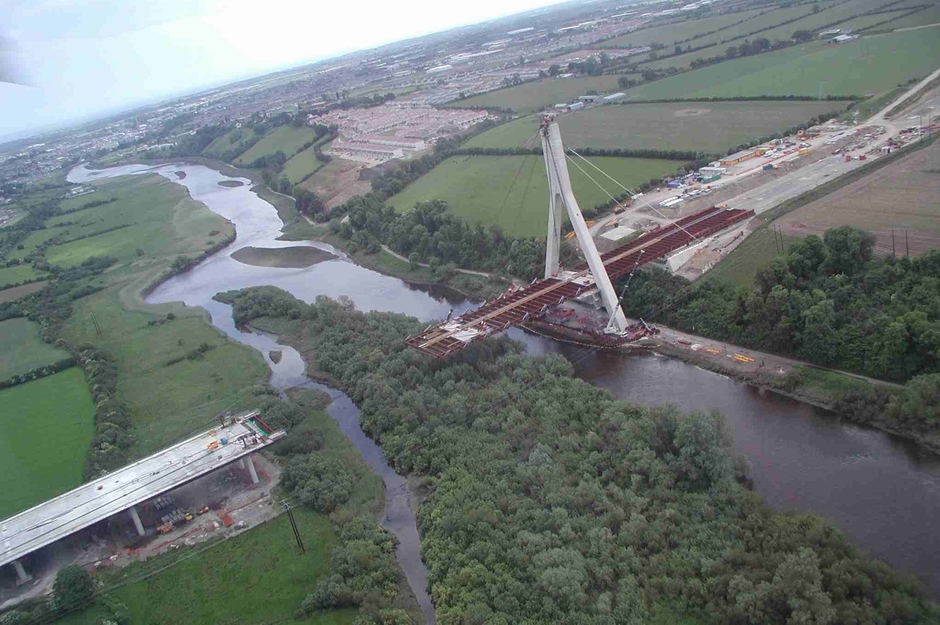Reference Project
Construction Engineering
Site Services
The Boyne bridge is a motorway crossing of the river Boyne in Ireland, some 30 miles north of Dublin. DLT were responsible for the design of the superstructure, as an alternative to the client’s design; detailed design of the erection methods for all elements of the deck and for supply and operation of the strand jacking systems used to launch the deck into final position. The re-designed bridge has a continuous composite deck with spans or 43.5m, 170m, 45m, 40m and 25m. The deck construction comprises two primary outer longitudinal girders with multiple transverse girders supporting a composite concrete deck. In the 170m main span the deck is supported by twenty eight fanned cables, fourteen on each side of the deck, which connect to a 95m high reinforced concrete ‘A’ frame pylon which is anchored by cables to the abutment behind.




The site is of special historic interest and working in the river was prohibited. A novel solution was devised by DLT at tender stage to overcome this constraint. The 113.5m long main and back spans were assembled behind the south abutment and then launched forward into final position. To support the deck during launching an arrangement of continuously adjusting strand jacks was used as shown below. Precise calculation of the deck geometry and strand jack forces at all stages was required to enable site operations to be properly controlled.
As far as we are aware, this is the only cable stay bridge in the world to have been erected in this way and should prove to be a useful method to employ on other projects where ground access is limited.


